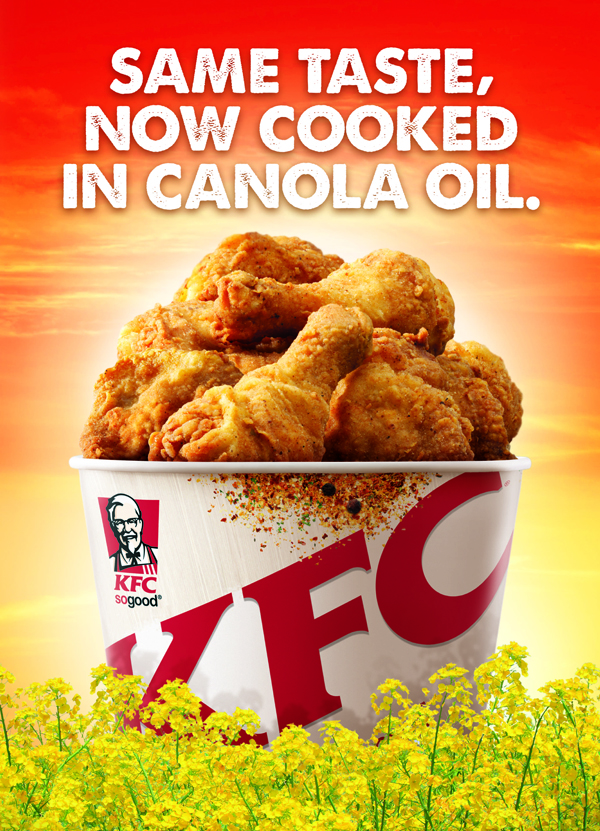From salads to kale smoothies, “healthy” is becoming a major trend, even in the fast food industry. Companies such as KFC are implementing changes in their menus in attempt to keep up with the growing health-conscious population. 
Despite so, KFC’s growth remains weak in Canada. On the other hand, Popeyes, another American fried-chicken chain, have experiencing strong growth. What is their secret?
They’re staying with their original deep-fried formula.
 As simple as that sounds, I realized it’s actually an important business decision that they’re making. Rather than following with trends, they’re taking the step to evaluate their business model and make the connection between their target segment and their value proposition.
As simple as that sounds, I realized it’s actually an important business decision that they’re making. Rather than following with trends, they’re taking the step to evaluate their business model and make the connection between their target segment and their value proposition.
“People are eating a lot of baked and broiled chicken at home,” Bachelder said. “No one makes this kind of food at home anymore. I like to say we eat boring, healthy food at home, and we eat things like Popeyes when we go out to enjoy a special evening.”
 Popeyes understands that their food is not meant to be an everyday meal, but rather an occasion treat. In that sense, what their customers value the most is not the ingredients behind the food but the taste–which is what Popeyes decided to place their attention on, and thus keeping with their original recipe. Afterall, it would be extremely difficult for a fast-food restaurant to re-position itself as “health-conscious” in order to win that part of the market segment, as we learned from class 8.
Popeyes understands that their food is not meant to be an everyday meal, but rather an occasion treat. In that sense, what their customers value the most is not the ingredients behind the food but the taste–which is what Popeyes decided to place their attention on, and thus keeping with their original recipe. Afterall, it would be extremely difficult for a fast-food restaurant to re-position itself as “health-conscious” in order to win that part of the market segment, as we learned from class 8.
In Comm class, one of the key ideas is how a company differentiates itself. I found this article an interesting read because Popeyes differentiation is as simple as not doing anything, but letting their competitors go out of their way to differentiate themselves in the wrong direction.
 Right off the bat, Lush differentiates its organizational culture with their interview. It was not a typical group interview where we sit in a table and talk about ourselves. Rather, Lush wants to make sure they are employing the right people by asking you to physical
Right off the bat, Lush differentiates its organizational culture with their interview. It was not a typical group interview where we sit in a table and talk about ourselves. Rather, Lush wants to make sure they are employing the right people by asking you to physical ly demonstrate their product to them. The atmosphere was more like a sleepover party where we shared our love for the products than an actual interview. This atmosphere carried on throughout all my training and shifts at Lush. We were taught to treat our customers like friends, and pay attention to what they say in order to give them the best shopping experience. When we’re not sure about a specific product during work, rather than feeling nervous about not knowing everything, we could easily call our co-workers over and help our customers together. We could even blow bubbles during the shop to demonstrate our bubble bars!
ly demonstrate their product to them. The atmosphere was more like a sleepover party where we shared our love for the products than an actual interview. This atmosphere carried on throughout all my training and shifts at Lush. We were taught to treat our customers like friends, and pay attention to what they say in order to give them the best shopping experience. When we’re not sure about a specific product during work, rather than feeling nervous about not knowing everything, we could easily call our co-workers over and help our customers together. We could even blow bubbles during the shop to demonstrate our bubble bars!



